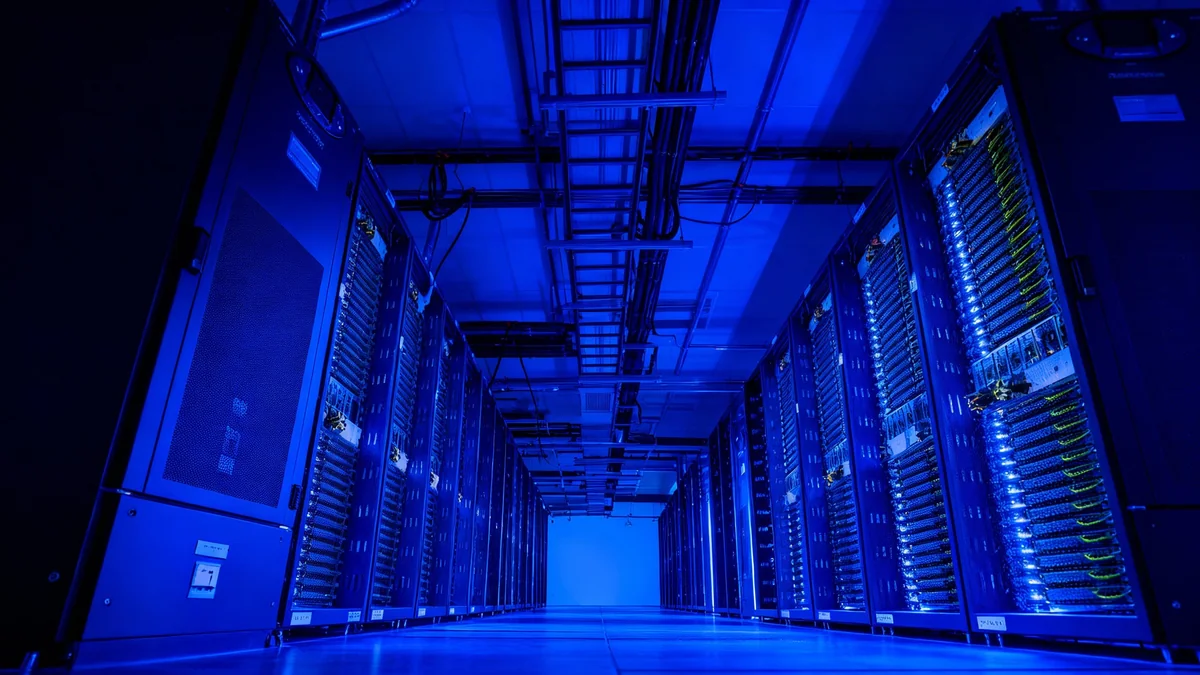Innovatech Inc. has announced a landmark $2 billion investment to establish a new artificial intelligence research and development hub in Austin, Texas. The project is expected to create approximately 5,000 high-skilled jobs over the next five years, significantly boosting the city's status as a major technology center.
The new campus will focus on developing next-generation AI models, machine learning algorithms, and robotics. This strategic move underscores Innovatech's commitment to leading the global AI race and diversifies its operational footprint beyond its Silicon Valley headquarters.
Key Takeaways
- Major Investment: Innovatech Inc. is investing $2 billion to build a new AI research facility in Austin, Texas.
- Job Creation: The project is projected to create 5,000 new high-skilled technology jobs in the region over a five-year period.
- Strategic Focus: The hub will be dedicated to advanced AI, machine learning, and robotics, positioning Innovatech at the forefront of AI innovation.
- Economic Impact: The investment is expected to have a significant positive effect on the local Austin economy, from real estate to service industries.
Details of the Landmark Investment
Innovatech confirmed the $2 billion plan on Tuesday, outlining a multi-phase development for the state-of-the-art campus. According to the company's official statement, construction is scheduled to begin in the first quarter of 2025, with the initial phase expected to be fully operational by mid-2027.
The facility will be located on a 90-acre plot in North Austin, an area already known for its growing concentration of technology firms. Innovatech CEO, Dr. Aris Thorne, emphasized the project's strategic importance in a press conference.
"This isn't just another office; it's a commitment to the future of artificial intelligence. Austin provides the perfect ecosystem of talent, innovation, and community support to help us push the boundaries of what's possible," Dr. Thorne stated.
The investment will cover land acquisition, construction of several research buildings, and the outfitting of advanced laboratories. These labs will include specialized hardware for training large language models and dedicated spaces for robotics testing.
A Phased Approach to Growth
The development will occur in three distinct phases. The first phase, costing approximately $800 million, will establish the core research facilities and administrative buildings. This initial stage is projected to bring 1,500 jobs online by 2027.
Subsequent phases, planned for 2028 and beyond, will expand the campus's research capabilities and employee capacity, eventually reaching the 5,000-job target by 2030. This phased rollout allows Innovatech to adapt to evolving technological needs while steadily integrating into the local economy.
Project by the Numbers
- Total Investment: $2 billion
- Jobs Created: 5,000
- Campus Size: 90 acres
- Construction Start: Q1 2025
- Phase 1 Completion: Mid-2027
Economic Impact on Austin and Texas
The arrival of Innovatech's AI hub is poised to create a significant economic ripple effect across Austin and the wider state of Texas. Local officials have praised the move, highlighting the influx of high-wage jobs and the potential for new business growth.
Austin Mayor Veronica Shields spoke about the long-term benefits for the city.
"Innovatech's decision to build its AI hub here is a testament to our city's dynamic workforce and pro-innovation environment. This partnership will generate substantial economic activity and solidify Austin's position as a global leader in technology."
Economists project that the 5,000 direct jobs will support the creation of thousands of additional ancillary jobs in sectors such as construction, hospitality, and professional services. The increased demand for housing and local services is expected to drive further economic expansion.
Why Austin?
Austin has become a magnet for technology companies in recent years, earning the nickname "Silicon Hills." The city offers several advantages, including a deep pool of tech talent from institutions like the University of Texas at Austin, a favorable business climate with no state income tax, and a vibrant cultural scene that attracts skilled professionals.
Competition and Collaboration in Silicon Hills
Innovatech will join a growing list of major tech players with a significant presence in Austin, including Apple, Tesla, Oracle, and Google. This concentration of tech giants is creating a highly competitive environment for talent, which could drive up wages and the cost of living.
However, it also fosters an environment ripe for collaboration. The proximity of so many leading firms and research institutions could lead to new partnerships and spur the growth of a local ecosystem of AI startups and suppliers.
The Broader Strategy for Innovatech
This investment is a key component of Innovatech's broader strategy to decentralize its operations and tap into diverse talent pools across the United States. By moving a critical research division out of the hyper-competitive and expensive San Francisco Bay Area, the company aims to enhance its resilience and access new ideas.
The focus on AI is particularly telling. Artificial intelligence is widely seen as the next major technological frontier, and companies are investing billions to secure a leading position. This new hub will allow Innovatech to accelerate its research without being constrained by the physical and financial limitations of its existing facilities.
Challenges Ahead
Despite the optimism, the project is not without potential challenges. The large-scale development will place additional strain on Austin's infrastructure, including transportation and housing. City planners will need to work closely with Innovatech to mitigate these impacts.
Furthermore, the rapid influx of high-paying jobs could exacerbate affordability issues for long-time Austin residents. Managing this growth responsibly will be a key test for both the company and local government. The project's success will depend not only on technological breakthroughs but also on its successful integration into the community.





